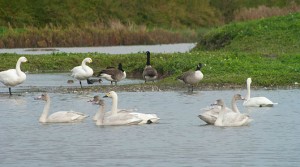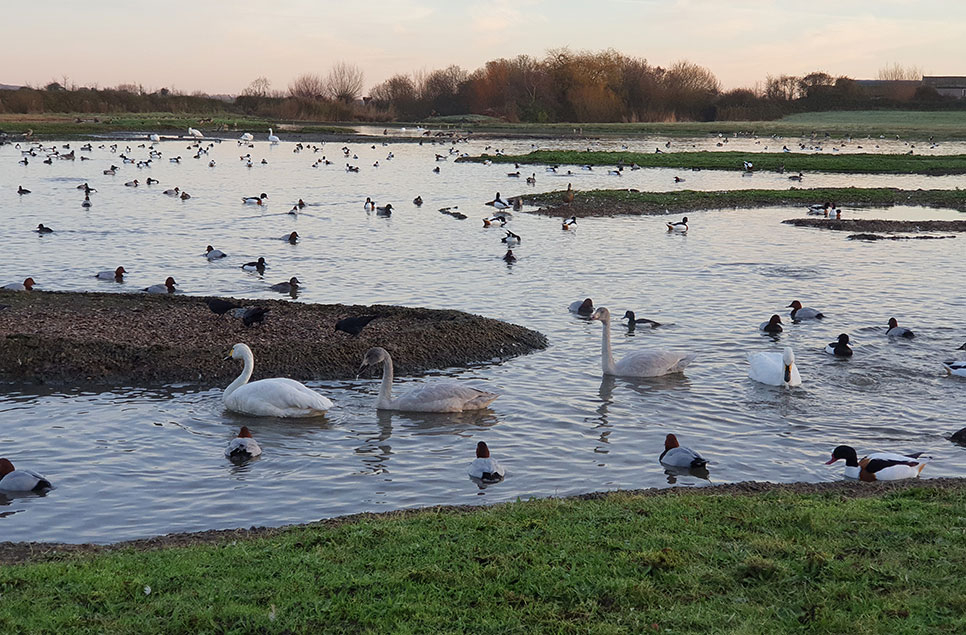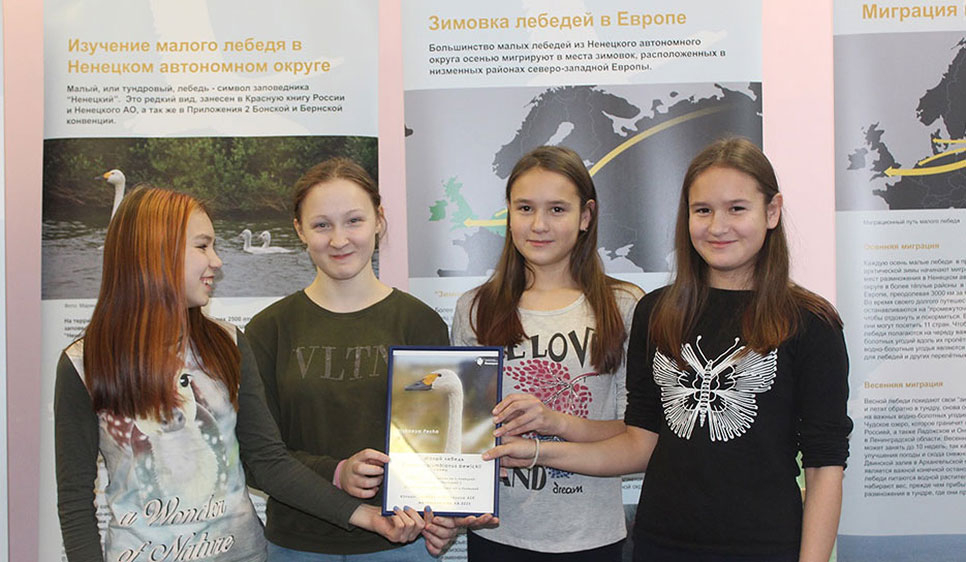Latest survey shows poor breeding
Last week, a big co-ordinated age count took place across Europe in an effort to determine whether or not the Bewick’s have had a good breeding season, information which may help us to understand what is driving the population’s rapid decline. This involved swan spotters heading out into the field and counting the number of cygnets in flocks wintering in the Netherlands, Britain, Germany, Denmark and Belgium. This pan-European age assessment, first initiated 20 years ago by Jan Beekman, is undertaken each winter and is crucial for evaluating annual variation in breeding success.

In 7,188 birds counted this week, 9.4% were juvenile. This is lower than we were expecting as preliminary findings had revealed large numbers of cygnets at certain wintering sites this autumn. In a ‘good’ breeding year, we would expect over 17% of surveyed flocks to be cygnets, and this latest result falls short of the estimated 10-15% annual mortality rate for the species.
However, the autumn has been unusually mild and the migration of many birds has therefore stalled leaving a significant proportion of the population further east. WWT research has shown that families arrive at wintering sites later than pairs and single birds, and so another age assessment in January, when most family groups will have arrived in Northwest Europe, will be necessary.
Special thanks to count co-ordinators Jan Beekman and Wim Tijsen and for swan counters throughout Northwest Europe.


